Dance
Contact Improvisation at Oberlin
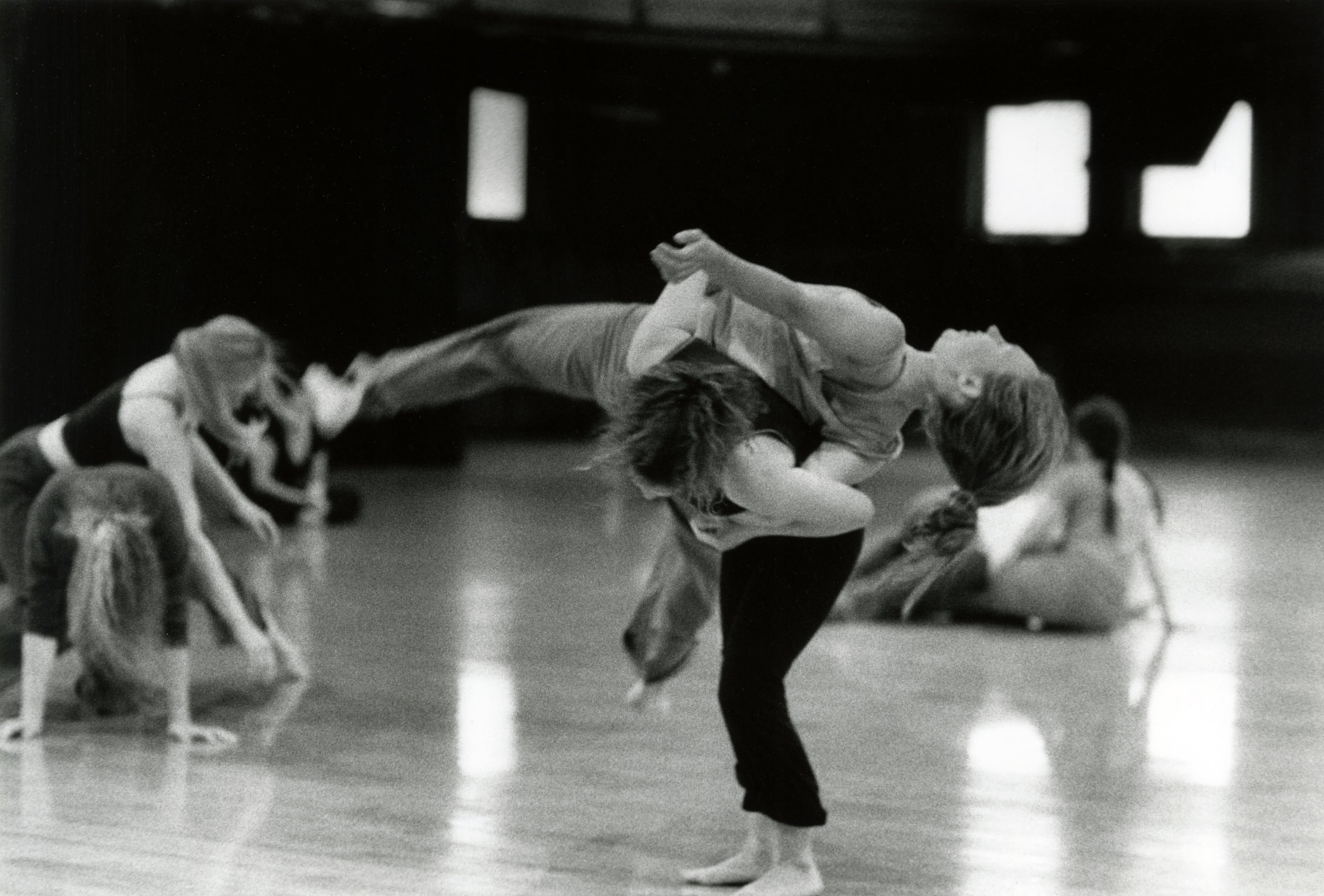
The Origins of Contact Improvisation at Oberlin College
Oberlin College has long been a wonderful site for experimental art-making. It is a campus full of creative people: innovative dancers, thinkers, and movement artists. The interdisciplinary, exploratory dynamics of Oberlin’s Inter-Arts program in the ’70s shaped and defined the beginnings of Contact Improvisation at the college and beyond.
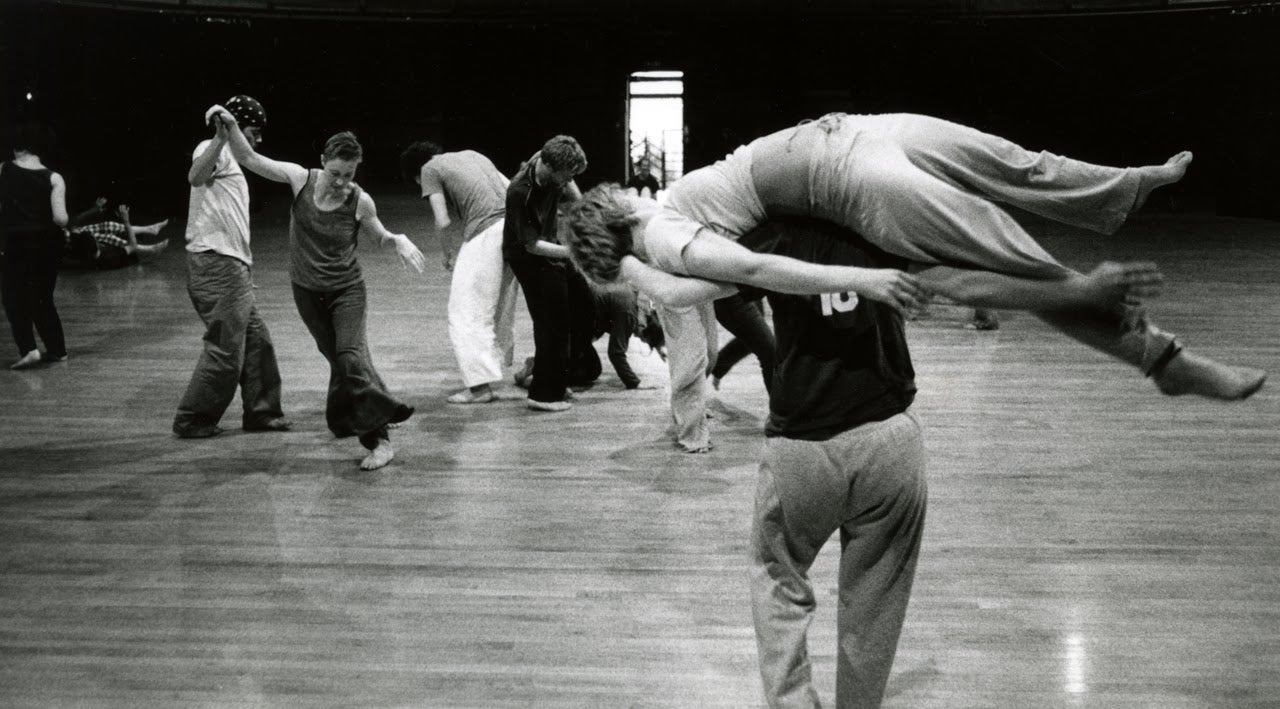
Photo credit: Courtesy of Oberlin College Department of Dance
During Winter Term in 1972, the choreographer Steve Paxton set a piece called Magnesium for twelve young men. Their exploration of weight and physics, falling and stillness, became the seed for Contact Improvisation, a movement language still flourishing today that explores partnering and improvisational dance by following a point of contact between bodies.
After witnessing the creation of Magnesium as a student, Oberlin graduate Nancy Stark Smith ’74 later approached Paxton and told him she was interested in what he was doing. Stark Smith would become one of the most pivotal voices, educators, and improvisers in the world of Contact Improvisation, coediting the publication Contact Quarterly: a vehicle for moving ideas for 45 years.
Oberlin’s experimental spirit was key to shaping Contact Improvisation, which remains a vital element of the dance department culture. CI first came to be on some wrestling mats laid out in Warner Main Space, a beautiful old gymnasium with springy wood floors and giant windows. Now, Warner Main is home to multifaceted dance activities, with explorations in movement still to come.
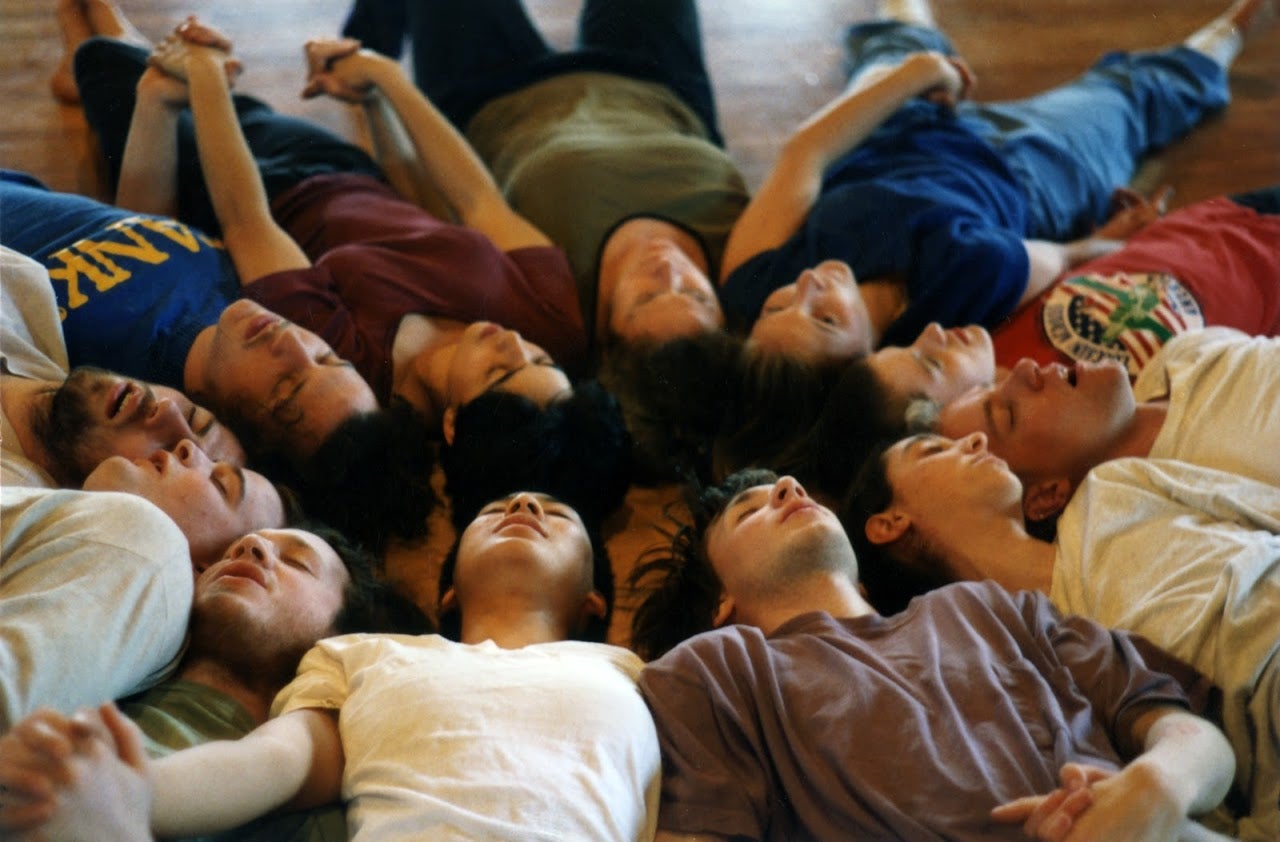
Photo credit: Courtesy of Oberlin College Department of Dance
We were on our backs on the floor doing the imagery exercise. Ann started to embrace the history of contact in Warner Main and explain how she feels that the experience of each dance coats the floors and walls of the space. I started to feel for the first time how loaded that room is, thinking of Magnesium being in the floor beneath me, of the injuries, of the joy, and of all the classes that have experienced the expansion I have been feeling all semester. I started envisioning Warner Main as an ancient wooden cup or grail, that is only used during its specific ritual and ceremony of dance. We are, and they have been, the wine or the nectar that swirls in the cup, and after it is emptied, its essence and flavor remains, shaded into the grain of the wood, so that it can never be washed away.
Nick Thompson ’00
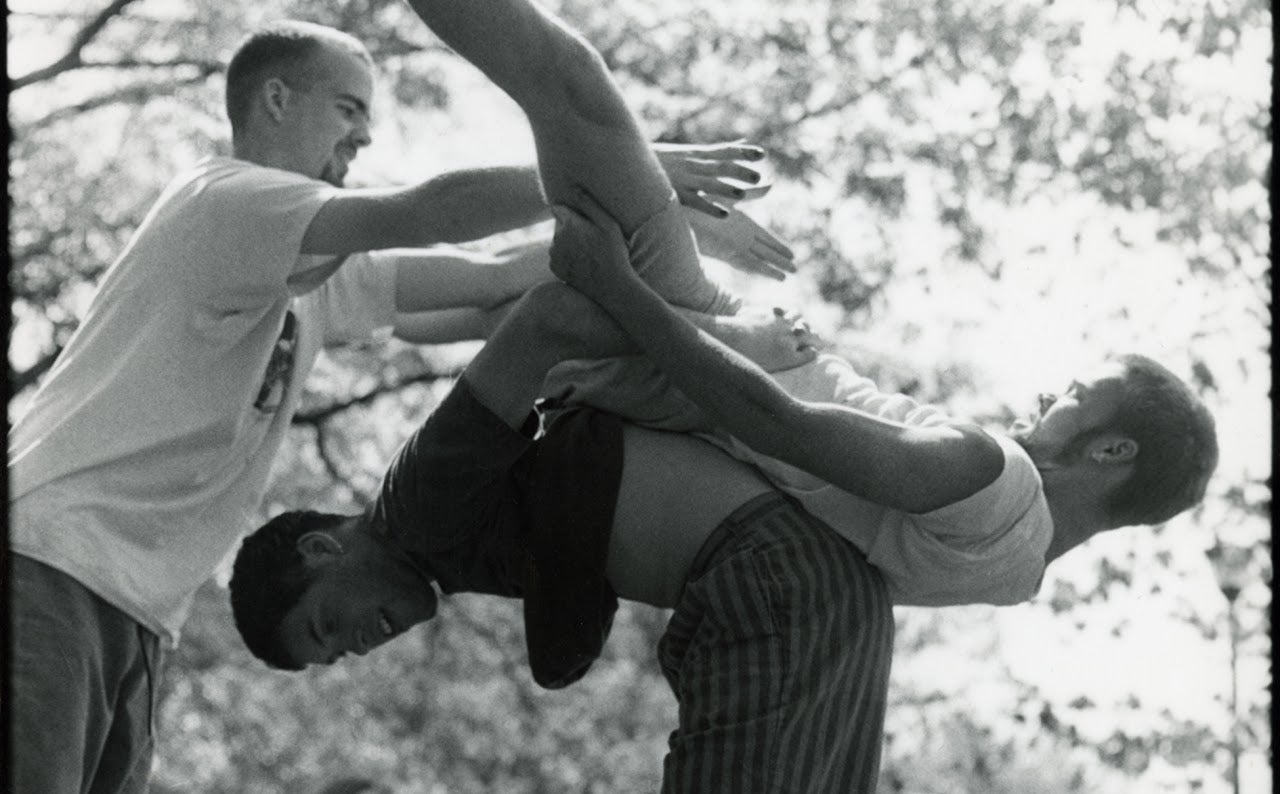
Photo credit: Courtesy of Oberlin College Department of Dance
While Contact Improvisation’s history began here in the 1970s, Oberlin College remains an active hub for its continued practice and exploration. Looking back on the history of the Dance department here at Oberlin, Contact Improvisation has always been growing and developing as students, faculty, and guest artists get together and organize different events and initiatives relating to the form.
For instance, in the Summer of 1997, more than 300 dancers from all parts of the international CI community came together to celebrate the 25th anniversary of Contact Improvisation. Over the course of one week, dancers and facilitators celebrated Contact’s history while also critically engaging with the form through training and mixed ability workshops and discussions. This engagement continues into the 21st century, as students in a 2010 Contact Improv cohort came together, with the support of Professor and Chair of Dance Ann Cooper Albright, to create Encounters With Contact which was a collection of writings and excerpts by CI community members examining the experience of learning and dancing the form from different perspectives.
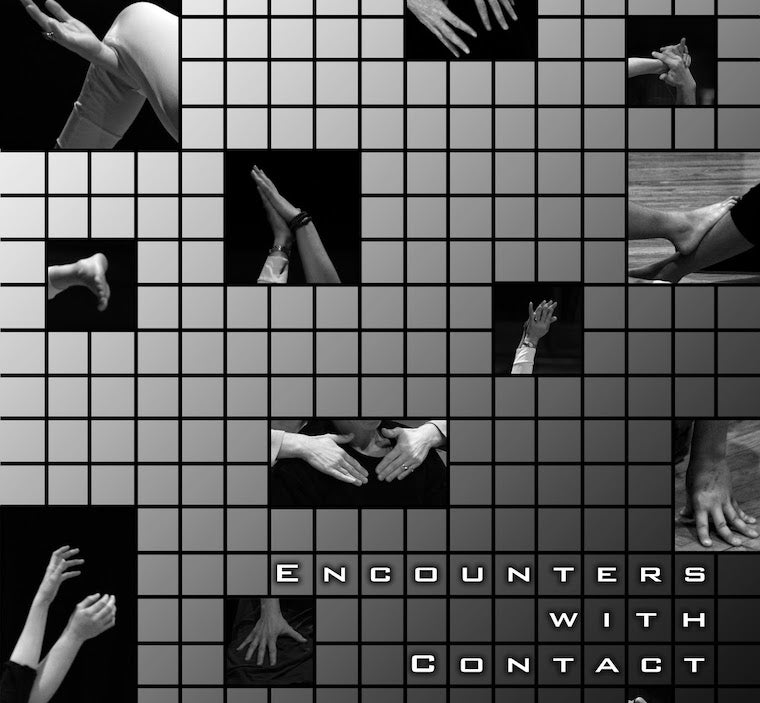
Cover design: David Brown
Reflections from the Present
Gabe Gomez ’22
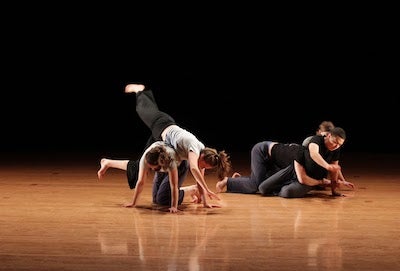
Photo credit: John Seyfried
In 2018, I took my first introductory Contact Improv class during the Fall semester with professor Ann Cooper Albright. At the time, she introduced the history of contact to the class and told us that we would be present for the 50th anniversary in 2022. As a first year student who did not have much of a dance background I was hesitant to engage with the form, but I was inspired to dive into the work since I had never seen or practiced anything like Contact Improvisation before.The class met three times a week in Warner Main and practiced foundational skills such as weight shift, rolling, and falling safely. Over the course of the semester we were able to refine our ability to attune to sensation within our body as well the sensation which came through connecting with one or multiple people.
At the end of the semester I left the class wanting to explore the form further and so I took Varsity Contact in the spring of 2018. The following spring was when I finally felt like I had fully come into my body and embraced the dancing. Varsity Contact was an intensive course in which we spent 6 to 8 hours every week for the entire semester diving deeper into the advanced techniques and history of the Contact Improv. We used writing, reflection, and improvisation to fully embody the work and I feel like I became a more articulatedancer and mover because of that class. We even created original scores to perform in Spring Back, the annual spring student dance concert at Oberlin College.
Almost two years later I have become very active in the Dance department here at Oberlin and I am still engaging with Contact Improvisation. In 2021, I am getting ready to participate in the 50th anniversary celebration of Contact Improv, just like Ann told me and the other introductory Contact students back in the fall of my first year!
Contact Improvisation Continues to Thrive at Oberlin
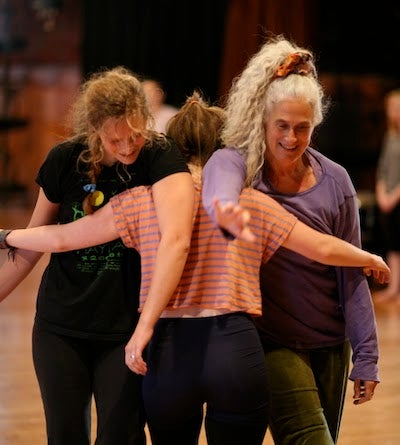
Photo credit: John Seyfried
Ann Cooper Albright has taught at Oberlin College for many years and has been a central figure in the Contact Improv scene here on campus, organizing performances during Fall Forward/Spring Back productions and events such as 24-Hour Jams and weekend intensives with guest artists for students and community members to become immersed in the tradition of CI. Even now when not much contact is being done, Ann has started to prepare for the 50th anniversary of Contact Improvisation in 2022. Similar to the 25th anniversary in 1997, this event will celebrate a milestone in the history of Contact and will help to propel the form forward and upwards as it continues to grow and bring new people in.
Over the course of its development, CI has morphed through many different stages but it has always been a social dance form which encourages active witnessing participation, with weekly jams open to the public every weekend in Warner Main Space. At its core, Contact Improvisation embodies an ethics which seeks to bring people in and build connections within communities.
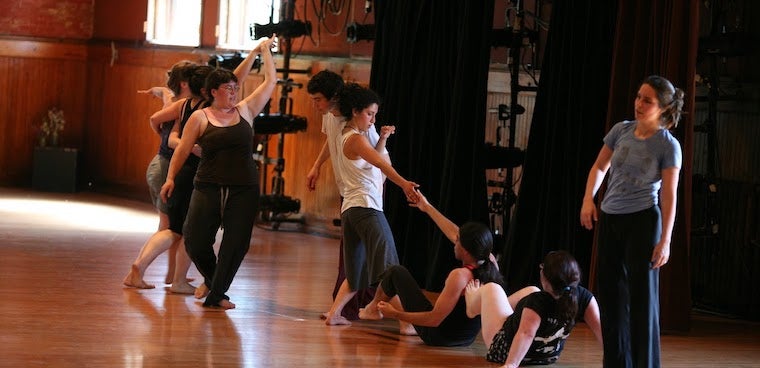
Photo credit: John Seyfried
Critical Mass: Celebrating 50 Years of Contact Improvisation at Oberlin
Next summer, come join the dancing and celebrate CI with us at Critical Mass, a 5-day event (July 7–11, 2022) hosted by Oberlin College.